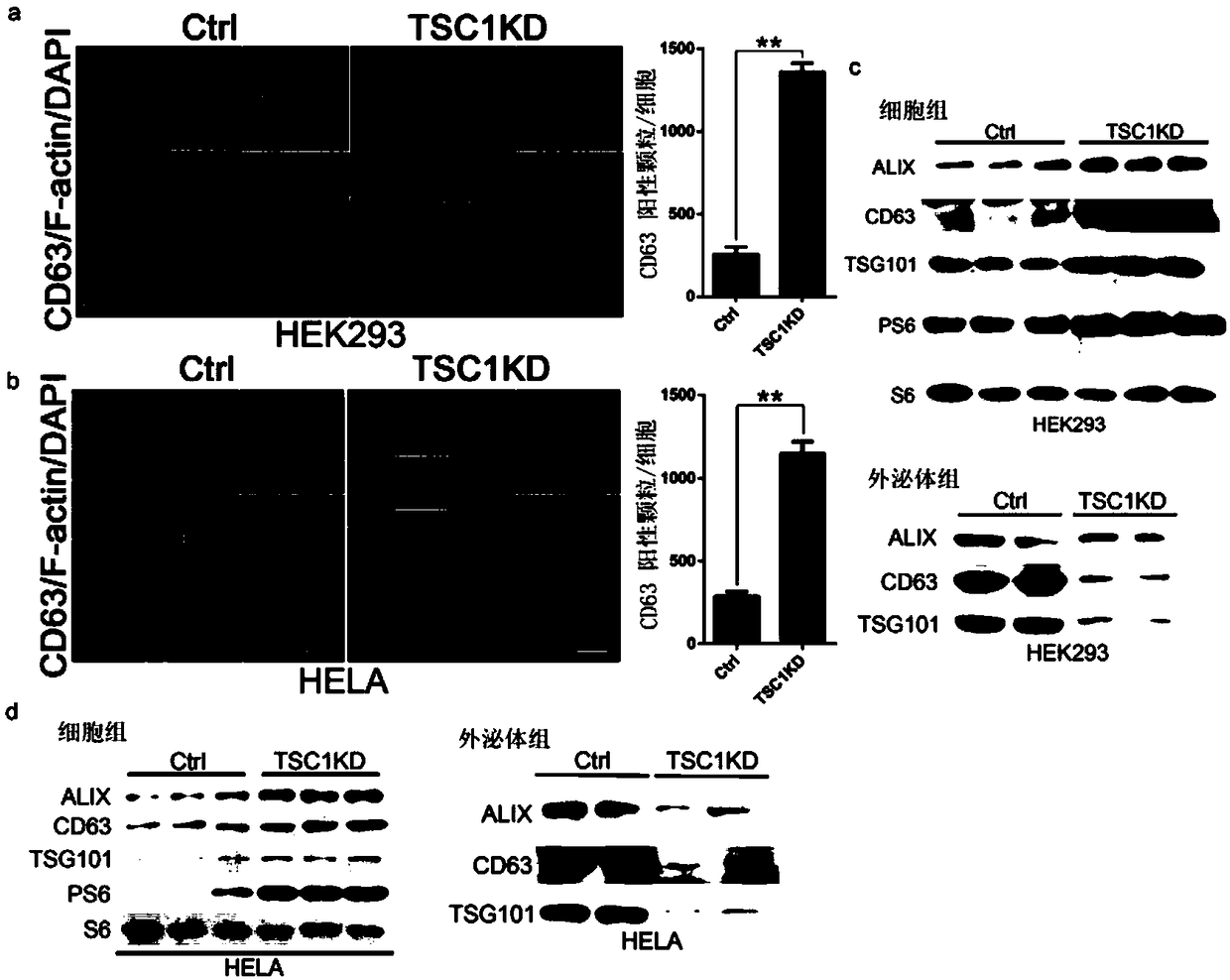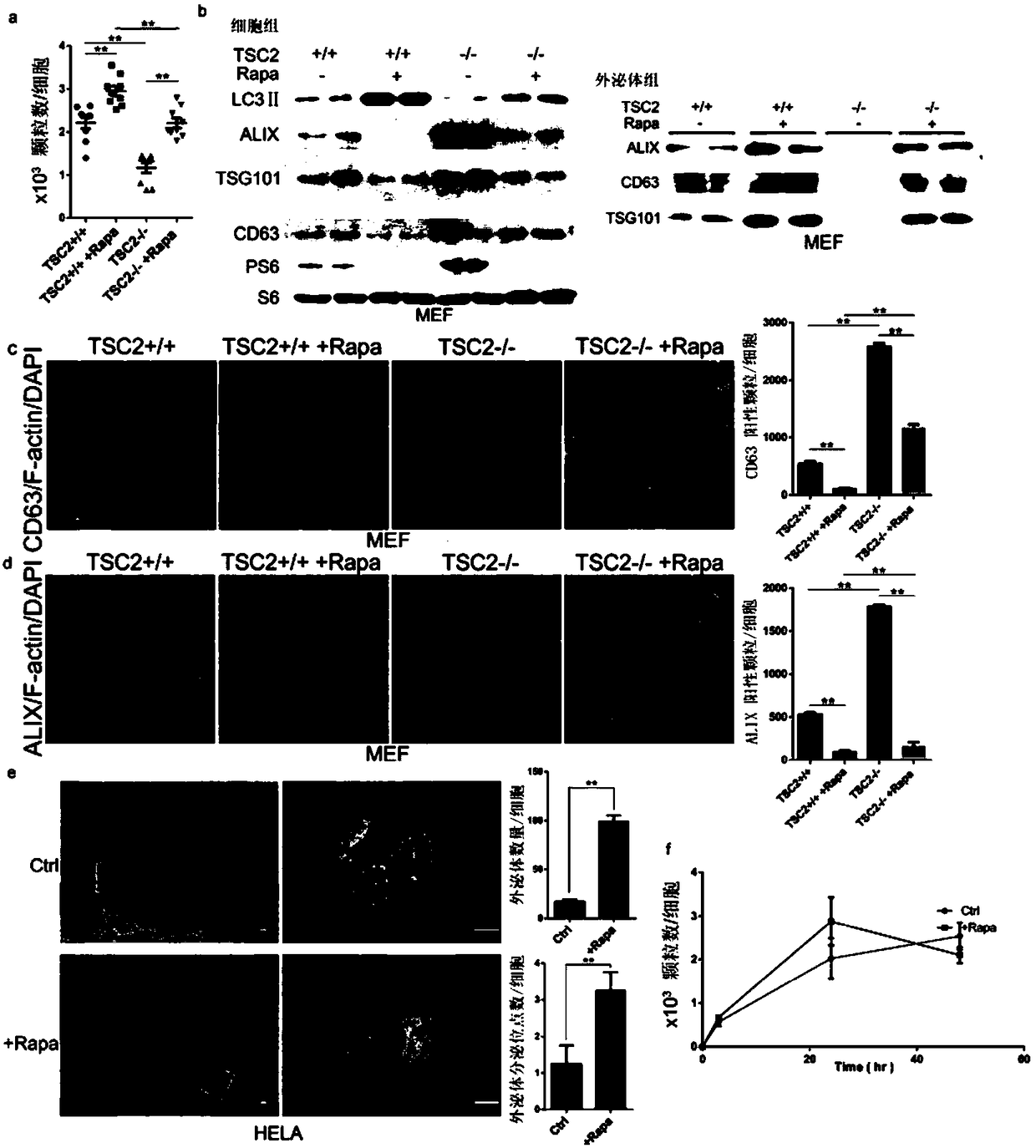Method for regulating exosome release, and medical application of method
A technology of exosomes and rapamycin, which is applied in the medical application of regulating the release of exosomes, in the field of regulating the release of exosomes, and can solve problems such as limiting the application of exosomes
- Summary
- Abstract
- Description
- Claims
- Application Information
AI Technical Summary
Problems solved by technology
Method used
Image
Examples
Embodiment Construction
[0028] The present invention will be further described in conjunction with specific examples, but the content in the examples does not constitute a limitation to the present invention.
[0029] Materials and Methods
[0030] cell culture.
[0031] TSC2+ / + and TSC2- / - mouse embryonic fibroblasts (MEFs), Hela and HEK293 cells were cultured in DMEM medium (Corning) containing 10% FBS (Gibco). pCMV6-GFP-CD63 was purchased from Obio Technologies (Shanghai), and infected Hela cells until they stably express GFP-CD63. The primary antibodies used in the study were anti-CD63 (#ab193349), TSG101 (#ab83) and ALIX (#ab117600) from Abcam, anti-P-S6 (#4858), LC3II (#3868) and mTOR from Cell Signaling ( #2972), anti-S6 (sc-74459) from Santa Cruz Biotech, anti-Rab27A (#17817-1-AP) and Rab27B (#13412-1-AP) from ProteinTech. DAPI for nuclear staining was from Fisher Scientific (#D1306).
[0032] animal.
[0033] Animal experiments were approved by the Animal Research Ethics Committee of So...
PUM
 Login to View More
Login to View More Abstract
Description
Claims
Application Information
 Login to View More
Login to View More - R&D
- Intellectual Property
- Life Sciences
- Materials
- Tech Scout
- Unparalleled Data Quality
- Higher Quality Content
- 60% Fewer Hallucinations
Browse by: Latest US Patents, China's latest patents, Technical Efficacy Thesaurus, Application Domain, Technology Topic, Popular Technical Reports.
© 2025 PatSnap. All rights reserved.Legal|Privacy policy|Modern Slavery Act Transparency Statement|Sitemap|About US| Contact US: help@patsnap.com



